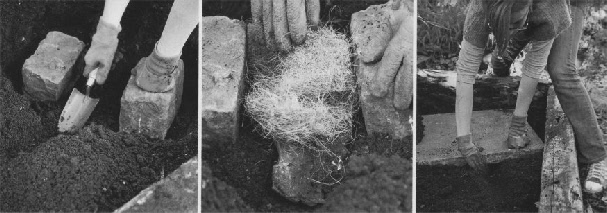Talk to us here at Rochford Life : 0786 342 7294 or E-mail us. For other numbers see individual pages.


Make a point of visiting us weekly! Tell a friend about us.
“Thinking Green” Pages
Bee Careful
Bee Careful
To return to the Series Contents Page, please CLICK HERE
When it comes to ‘green’ issues we can sometimes find ourselves getting swept along in a wave of panic which isn’t always science based. Bees are important to us, no question about that, but what is happening to the bee population in this country? Bees have been getting a lot of press recently, but it’s not just the past few months; this goes back much longer:

“a new report by the Parliamentary Office of Science and Technology has spelled out the devastating economic impact that the disappearance of bees would have on the UK. The insects provide an essential service to agriculture and wildlife by pollinating crops and flowers.
The report says that without them, many crops would need to be pollinated by hand, an exercise that could cost £1.5 billion a year.
If such action was not taken, farm income could slump by 13 per cent, costing the economy more than £440 million. The latest research has revealed that managed honeybee populations in England have declined by 54 per cent in the past 20 years while numbers of wild bees such as bumblebees have also plummeted”
Daily Telegraph 2010
The plight of the bee
Bees are under threat like never before, with their numbers declining. There is strong evidence that neonicotinoids – a class of pesticide first used in agriculture in the mid 1990s at exactly the time when mass bee disappearances started occurring – are involved in the deaths. Another major factor is intensive agriculture – monoculture's and the widespread use of pesticide and herbicide contribute to a loss of habitat and food for bees. Organic farming, by contrast, encourages higher levels of wildlife – including bees – on organic farms.
http://www.soilassociation.org
Recent
Bees are under threat like never before, with their numbers declining. There is strong evidence that neonicotinoids – a class of pesticide first used in agriculture in the mid 1990s at exactly the time when mass bee disappearances started occurring – are involved in the deaths. Another major factor is intensive agriculture – monoculture's and the widespread use of pesticide and herbicide contribute to a loss of habitat and food for bees. Organic farming, by contrast, encourages higher levels of wildlife – including bees – on organic farms.
http://www.soilassociation.org
Recent
Others join in:
The truth is that there is a bee crisis. The population is falling drastically.... It is also not news that research suggests the presence of neonicotinoids in insecticides may well have an influence in this. One study pointed to the effect on bees' homing systems, meaning that they were travelling to gather pollen and failing to return to the hive, eventually dying of starvation. Others indicate that the neonicotinoids weaken their immune systems making them more susceptible to other diseases such as veroa. Nothing is proven beyond reasonable doubt - it might be wrong.
The potential harm is not just serious but catastrophic. Bees are responsible for pollinating such a large proportion of our staple foods that we could not exist without them. No bees, no food, no human life.
Monty Don - TV Gardener & writer
The truth is that there is a bee crisis. The population is falling drastically.... It is also not news that research suggests the presence of neonicotinoids in insecticides may well have an influence in this. One study pointed to the effect on bees' homing systems, meaning that they were travelling to gather pollen and failing to return to the hive, eventually dying of starvation. Others indicate that the neonicotinoids weaken their immune systems making them more susceptible to other diseases such as veroa. Nothing is proven beyond reasonable doubt -
Monty Don -
Other take action...
Fruit, vegetable and flower growers who supply Waitrose have been asked to stop using pesticides linked with the decline of bees. The supermarket has asked its suppliers to stop using three types of neonicotinoids by the end of 2014 at the latest.
Waitrose Weekend April 2013
Fruit, vegetable and flower growers who supply Waitrose have been asked to stop using pesticides linked with the decline of bees. The supermarket has asked its suppliers to stop using three types of neonicotinoids by the end of 2014 at the latest.
Waitrose Weekend April 2013
BUT Science isn’t so sure!
Look up and read the article on the Forbes website:
“Science Collapse Disorder -- The Real Story Behind Neonics And Mass Bee Deaths”
http://www.forbes.com
Look up and read the article on the Forbes website:
“Science Collapse Disorder -
Other causes:
Bee population at ‘crisis point’ as numbers hit by bad weather in UK
Beekeepers across the country have reported a drop in colonies as a wet summer last year gave way to an extended winter. Flowers are not yet blooming and hives which survived the winter are weeks behind where they should be at this time of year, experts claim.
Tony Maggs, a 61-year-old beekeeper from Derby, said: ‘Twenty-four of my 50 hives are now empty. It’s not just the long winter we had, problems started last spring and continued into the summer. ‘The cold and wet meant the plants’ pollen yields were low and the bees weren’t able to venture out to collect what little pollen was around.’
The varroa mite and diseases have also taken their toll. The British Beekeepers Association said the previous four years have seen a decline in colonies surviving the harsh winters.
Metro News April 2013
Beekeepers across the country have reported a drop in colonies as a wet summer last year gave way to an extended winter. Flowers are not yet blooming and hives which survived the winter are weeks behind where they should be at this time of year, experts claim.
Tony Maggs, a 61-
Metro News April 2013
What does a bee-friendly garden look like?
As a rule of thumb your garden should provide bee-friendly flowers that are rich in pollen and nectar which bees can easily access from spring until late summer. This will ensure that there is a good supply of pollen at all of the crucial times:
• When the queens are establishing nests.
• When nests are growing.
• When nests are producing new queens and males.
• When queens are fattening up ready for hibernation.
The greater the number of suitable flowering plants in your garden the better but you should aim for at least two kinds of bee-friendly plant for each flowering period. You can plant what you like in your garden so long as it doesn’t escape into the wild. You will find all sorts of exotic things in garden centres and catalogues which bees will enjoy.
http://bumblebeeconservation.org
• When nests are growing.
• When nests are producing new queens and males.
• When queens are fattening up ready for hibernation.
The greater the number of suitable flowering plants in your garden the better but you should aim for at least two kinds of bee-
Bees are looking for two things when they visit our gardens: to refuel with sugar-loaded nectar for energy and to find a nourishing meal of pollen that provides a balanced diet of proteins and fats. In return they pollinate flowers, ensuring we have fruit and crops to harvest.
Not all plants produce nectar and pollen, many showy plants have double blooms that are sterile or inaccessible to bees. When designing planting schemes, try choosing traditional cottage garden plants that bees find particularly attractive. Some of the best plants for the job have open, daisy-like blooms, such as asters and sunflowers. Other bee-friendly plants including pulmonaria, aquilegia, campanula, foxglove, verbena bonariensis and phlox will work their magic too, especially if planted in large drifts.
Herbs such as rosemary, marjoram and borage, and quick-growing annuals, lure bees and can be planted everywhere, including allotments. Consider creating a wildlife patch with native species such as teasel and meadow cranesbill or corn marigolds and field poppies – these will attract many more beneficial insects than cultivated garden plants. You can also help by avoiding pesticides and providing somewhere safe for insects to shelter, nest and hibernate, such as an area of long grass and stacked bundles of hollow stems.
Three of the best for bees: Lavender, Perennial wallflower, Ice plant
Waitrose Weekend April 2013
Herbs such as rosemary, marjoram and borage, and quick-
Three of the best for bees: Lavender, Perennial wallflower, Ice plant
Waitrose Weekend April 2013
And finally... Why not make a bumble bee nest....

1. Dig a hole approx 15cm deep, about half the width of an old paving slab., Place a brick either side and with a trowel form an entry channel.
2. Across the base put scrunched up chicken wire or some bark to keep the nest dry and off the ground. Use coir, died moss or dried grass as the nest to fill the remaining space.
3. Place the slab on top to well cover it but leave the entrance clear. Plant flowers etc. around it to hide it., or put a pot plant on the slab.
2. Across the base put scrunched up chicken wire or some bark to keep the nest dry and off the ground. Use coir, died moss or dried grass as the nest to fill the remaining space.
3. Place the slab on top to well cover it but leave the entrance clear. Plant flowers etc. around it to hide it., or put a pot plant on the slab.